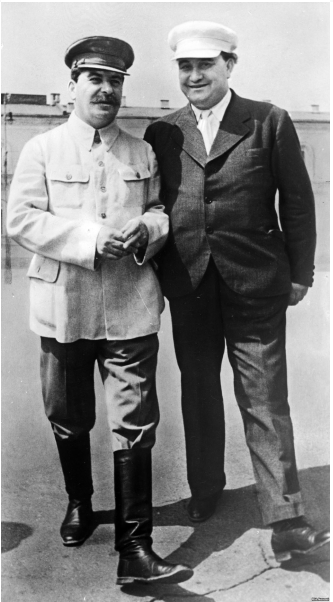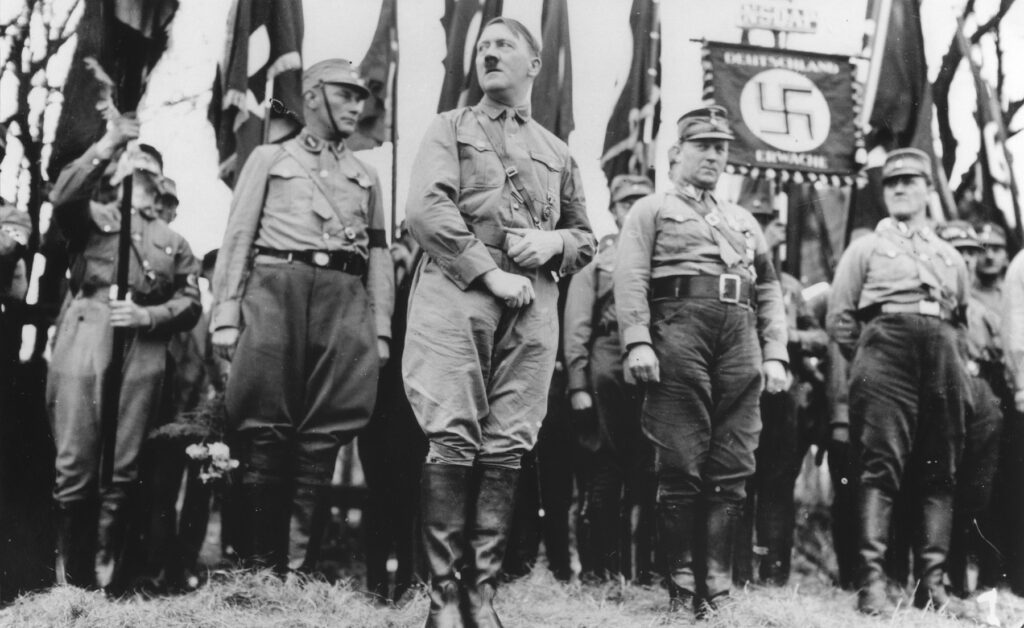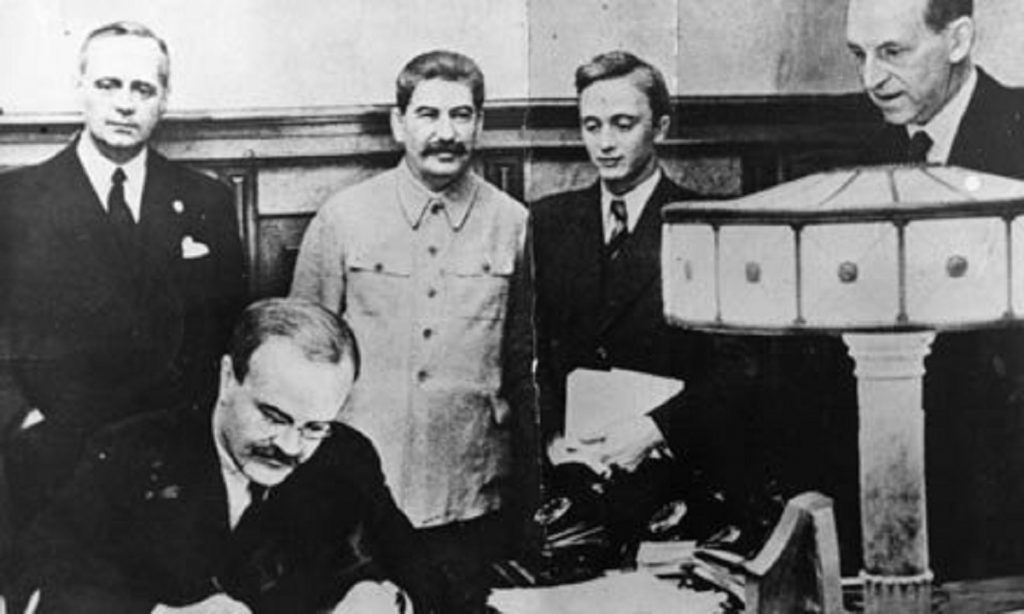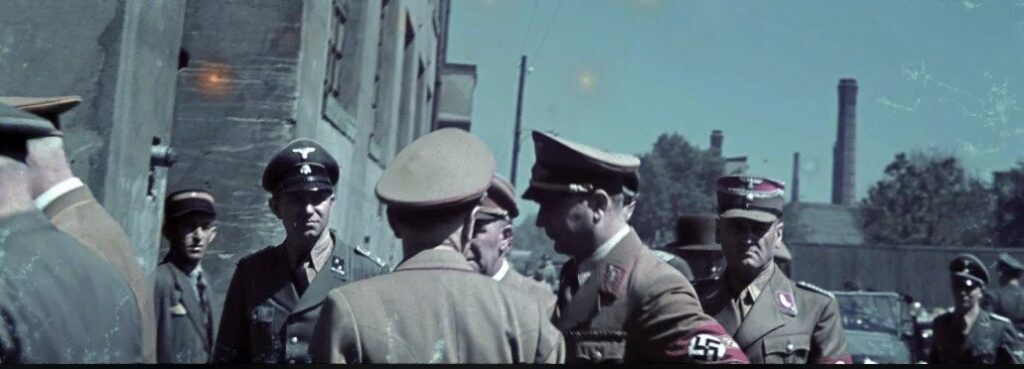The historian Zsuzsanna Borvendég's series was originally published on the PestiSrácok website, but there are certainly those who missed it. But those who haven't read all the parts should also read it again. Knowing the whole picture, can we understand how we got here?
For almost a hundred years, public thinking has been dominated by the – in my opinion – false explanation that Communism and Nazism can be considered two opposite extremes and the farthest from each other on the political spectrum. Many philosophers, historians and other thinkers have stated that there is no essential difference in what they have to say, their ideas and their technical means of power, but what kind of cooperation took place behind the hostility shown on the surface between the commissars of these two anti-human ideologies is rarely discussed. However, Hitler and Stalin collaborated with each other even before the 1939 Pact, and this relationship did not end with the launch of Operation Barbarossa - that is, with the German attack on the Soviet Union - or even after the end of the war, these two found each other supporters of murderous ideology. While from the mid-1930s to the present, the only legitimizing basis of communism was the fight against "fascism", in the meantime they built their own total system by helping each other. This cooperation based on mutual benefits had many manifestations in the organization of Hungarian foreign trade after 1945.
The first major staged conflict between Stalin and Hitler took place in connection with Dimitrov trial Dimitrov was a key figure in the Western Bolshevik network, he also knew the German communists working illegally, so he could have been a huge catch for the Hitlers, but he was released after the trial.

Stalin and Dimitrov (image source: nabore.bg)
Dimitrov was not released by accident either
Apparently, an agreement was reached between the two secret services to spare Dimitrov, but the consequences of the trial suggest that a plan calculated with diabolical precision was behind everything.
Did they do Hitler a favor by "discrediting" the SA?
Stalin's most important agents - such as the previously mentioned Willi Münzenberg - immediately set about organizing their own counter-trial after Dimitrov's arrest. The "negotiation" was held in London, which blamed the burning of the German parliament on the militant organization of the SA, that is, the National Socialist German Workers' Party. It is interesting, however, that the so-called "brown book" published by them, in which they listed the crimes of the SA, hardly even mentions Hitler, that is, it takes action against Nazism (or as Stalin referred to it with a conscious slip: fascism) in such a way that its chief leader, its spiritual father by no means makes him responsible. At first reading this may seem quite absurd, but it has its own logic.

Hitler still marched with the SA in Weimar (image source: collections.ushmm.org)
After the seizure of power, the already infamous SA general staff became more and more difficult for Hitler, perhaps mainly because they still took the socialist clause seriously in the name of the party , i.e. they were anti-capitalist. Moreover, the organization was powerful enough to represent a potential internal enemy to him, so he wanted to get rid of them. The international campaign organized by the Münzenbergs, which discredited the military organization, was successful for Hitler. With the murders carried out on the "Night of the Long Knives", he also increased his political reputation in the eyes of the world, gained good points with the representatives of German big business, while eliminating his possible and undesirable opponents.
Help with cleaning?
Stalin could also be satisfied with the result. Thanks to the intensified propaganda, it was permanently burned into the public's consciousness that the communist ideology using a humanist argument system is the greatest enemy of the far-right currents - all this, of course, without even trying to discredit Hitler. Although after the Dimitrov trial, Hitler hunted down most of the German wing of the Comintern, it was actually not against Stalin either: this time he did not have to carry out the internal showdown with his own hands. Hand washes hand. Stephen Koch wrote about this Hungarian-born Gyula Alpári [see our previous article]. Based on Koch's evidence, Alpári was simply handed over to the Gestapo by Stalin to do the dirty work for them - ed.)
And the big settlement came
culminated in the 1939 agreement, delicately the Molotov-Ribbentrop Until the German attack launched against it, the Soviet Union supplied the Third Reich with the raw materials necessary for warfare, and even with industrial products, not to mention the joint occupation of Poland. Although these facts momentarily shook the peace of mind of fellow passengers of the time, the cognitive dissonance did not last long: if the Big Brother claims to be anti-fascist, then he is.

Signing of the Moltov-Ribbentrop Pact (photo: múlt-kor.hu)
The only question is: how is all this related to Hungary's foreign trade after 1945?
After the peace, joint business continued
Approaching the end of the World War, both superpowers were aware that the temporary alliance system would disintegrate and that the former comrades-in-arms would become each other's greatest enemies in the future. They are ready for the Iron Curtain to come down.
At the same time, the economy was already largely globalized, international large corporations and banking systems dominated the world's financial markets - how could the globe be divided into two artificially isolated halves from one moment to the next? Economic interoperability had to be ensured, and this intention can be clearly seen in the secret service actions of both great powers.
The key actor: Karpik - incorporated here and there
In order to create an economic bridge, the Soviet and American intelligence started to establish companies even before the German state treaty was concluded, but what is really interesting: behind some of the established companies there was a common will. Atlas GmbH was founded in Munich in 1948 Randolph K. Stone . One of the owners of the Atlas company Ferdinand Karpik , who was in contact with the Polish government in exile in Washington, as well as with one of the high-ranking officers of NATO countermeasures on Stone's instructions. In the meantime, he was a communist spy, more precisely the Polish state security, Urząd Bezpieczeństwa, and the Americans knew about it.
Karpik was arrested by the Germans during the Second World War and spent a long time in concentration camps because of his leftist involvement. He was also imprisoned in Buchenwald and Dachau. The American countermeasures occupied Karpik even in these years, and Stone was his contact. Until 1943, he regularly sent reports to the allied forces, but at that time the relationship between them was temporarily interrupted - apparently this is when Karpik was captured by the Germans. Immediately after his release, he traveled to the American occupation zone of Germany to reconnect with his former holding officer - thus the game began.

Nazis in Poland (image source: Fortepan)
The companies Donau Handel and Frigaliment were established roughly at the same time as Atlas with a similar structure and with the same ownership background. The aim of all three enterprises was to expropriate the trade of the Eastern Bloc towards Germany. This was achieved quite quickly: between the entire Soviet bloc and West Germany, in the early 1950s, Karpik handled the meat trade almost exclusively, but a wide range of trade deals were concluded with Polish émigré companies, from other foodstuffs to steel industry products.
Meanwhile, the CIA was aware that Karpik was one of the key figures in the Soviets' illegal financial transactions in the West, who was also secretly involved in the international arms trade. (By the 1960s, he had become a rich and influential businessman.)
The Americans were also involved in the Sovietization of Poland
Immediately after its creation, Atlas received a monopoly on the export of Polish meat to the West, and paid commissions to the Polish Communist Party after deliveries, contributing to the stabilization of its finances. With this - and the black trade of technical items of greater value, such as watches - it was possible to fill the party's coffers to the extent that they could finance the exclusive acquisition of power and the liquidation of the opposition.
All this means that the American authorities indirectly contributed to the sovietization of Poland through the operation of Atlas: on behalf of the American intelligence, a communist secret service agent founded a company to break through the Iron Curtain and, in the meantime, generate money to finance the Soviet imperialist aspirations. This story is beautiful in itself, but where does the Nazi line remain?
Almost without exception, the employees of Karpik's companies were former Nazi officers or high-ranking members of the Hitler government , who previously held some function in the countries that were in the Soviet occupation zone and were not held accountable for war crimes. Obviously, they offered their services to the allies, and their network of contacts and knowledge meant such a value to the United States of America in the great power competition against the Soviet Union, that it overrode any moral or ideological considerations.
Key Nazi: Helmut Triska
The company included a former Nazi officer named Helmut Triska Triska was born in Austria in 1910, already as a student she was a committed supporter of Nazi Germany and - according to Czechoslovak intelligence - worked for the German secret service. He failed in 1936, so he had to flee the country; later it was redirected to Czech and Hungarian territory. He developed the concept of annexing German-inhabited Hungarian territories. After the Anschluss, Hungary became a direct neighbor to the Third Reich, which significantly limited the country's room for maneuver, and at the same time, the Hungarian side also raised the possibility of a territorial revision of the Őrvidék region, but it soon became clear that all this was just a vain dream: in August 1939, Hitler declared to Governor Miklós Horthy , that the two states have reached their final historical limits.
At that time, however, Helmut Triska's border amendment idea was already ready, which would have annexed Western Hungary to the empire, referring to the false and tendentious claim that the region is made up of a chain of German-inhabited settlements from Bratislava to Szentgotthárd. The Triska plan would have separated an area of 1,250 square kilometers and a population of 120,000 people from our country, of which the city of loyalty, Sopron, and its surroundings were naturally an integral part.
The German war victory hoped for by the Nazis did not materialize, so Triska's plans to change the border did not materialize either, but the diplomat, who knew the region well, was a key figure in German-Hungarian relations for decades to come.
Triska worked as a "cultural attaché" in Budapest
In 1942, he was posted to Budapest as the cultural attaché of the German embassy. However, the seemingly less harmful position only provided a diplomatic cover for the real assignment: Triska was the most influential representative of the RSHA, i.e., the Main Imperial Security Office, in Hungary. The RSHA functioned as the supreme body directing Nazi repressive organizations (including the Gestapo). Ernst Kaltenbrunner , the later head of the Main Office for Imperial Security , who, according to the CIA, Heinrich Himmler's intelligence officer in Austria before the Anschluss.
At the end of 1944, Triska was transferred to Italy, where the war ended. He was arrested by American authorities, but escaped the dock. The CIA used him as an informant: his targets were primarily Hungary and foreign traders coming from there. He performed his duties despite the fact that he was not allowed to enter Hungary after 1945 - precisely because of his activities in Budapest during the war, he was declared a war criminal.
Nevertheless, he was able to build a wide network of contacts between the foreign traders delegated to the FRG and the makers of the official Hungarian trade policy, and with his network over the years he appropriated a significant part of the benefits of Hungarian and West German trade.
(to be continued)
Source: PestiSrácok
Author: historian Zsuzsanna Borvendég
(Credit Image: Andrew Harrer/Getty Images)












